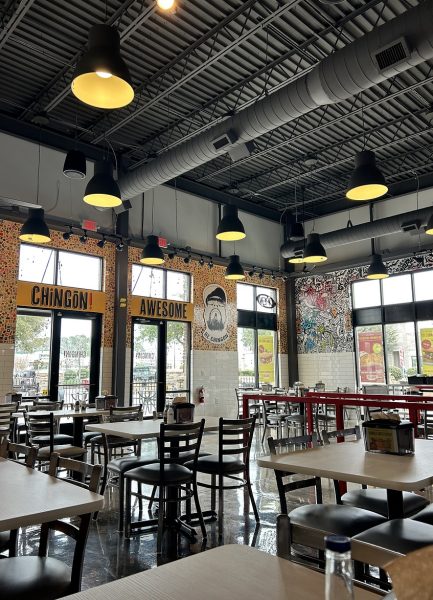The Historic Wilmington Foundation honors Preservation Month with slate of new projects
This past May, many organizations across the nation celebrated Preservation Month, an annual holiday dedicated to honoring America’s build history. The Historic Wilmington Foundation began the month by releasing a focused preservation plan during a press conference on May 12 in honor of the occasion.
“National Preservation Month was established back in the 70s by the National Trust for Historic Preservation. It was initially a weeklong celebration but expanded in 2005 to include the entire month [of May]. Every year, we determine how to execute that celebration locally,” said Travis Gilbert, executive director of the Historic Wilmington Foundation in a Zoom interview with The Seahawk. “This year, we wanted to focus on advocacy, uplifting places built on diverse, grassroots history.”
The foundation acted on this by releasing a list of challenges to the community during the press conference, incorporating many of their Preservation Month goals. There are five, each reflecting this central goal in order to preserve and highlight elements of the community history that deserve its support.
The first is to contact a designated congressional representative in support of the Historic Tax Credit Growth and Opportunity Act, a group of tax provisions that will benefit historic build projects. This can be done easily with a pre-written email form that the National Trust of Historic Preservation provides.
The second is to participate in the cleanup of Maides Cemetery, a historic African American burial site that has fallen into disrepair. It is an ongoing effort led by Kathy King that the historic foundation is recruiting volunteers for.
“We invite anyone to help preserve this sacred ground,” said Gilbert. “Black history matters, and it is a shame that the cemetery fell into such a state. It is not right, not just. We are committed to a permanent solution.”
After a month of work, there is still more to be done. To offer your support, email the foundation with a statement of interest.
The third goal is to contact the New Hanover County commissioners in support of the placement of a preservation easement on the Borst Building, a contributing structure in the Wilmington National Register Historic District. The county’s proposed public-private partnership with Project Grace has placed this property under threat of demolition.
The fourth is to submit histories, photographs, and sites to be included in Pender County’s African American heritage trail, which will highlight the area’s rich Black history. Anyone who wishes to contribute may contact Pender County Tourism. Finally, the fifth goal is to submit a letter of support for Brunswick County’s Gullah Geechee greenway/blueway heritage trail, honoring the history and culture of this people. An application to the National Park Service’s Rivers, Trails, and Conservation Assistance program has recently been submitted for this project.
Many of these goals are still underway, requiring continued support from the community until their completion. More details are available on the foundation’s website for those interested in helping preserve these key elements of Wilmington’s history.
However, amongst the awards the Historic Wilmington Foundation has given out in honor of the holiday, their most striking Preservation Month project is in the Giblem Lodge. First built in 1871, this building is a hallmark of Black history in Wilmington, making it one of the most important historical locations in the area.
Located downtown at 720 Princess St., the Lodge has been home to an order of Black Freemasons since its construction. It is one of the oldest Black Masonic lodges in North Carolina, second only to the King Solomon Lodge in New Bern.
“This building has been a community center for Black Masons and non-Masons alike,” said Gilbert about the Giblem Lodge. “It has hosted a technological and agricultural fair, served as a market where fruit and other goods were sold on the first floor, and acted as a voting place for Black men. After the white supremacist coup-d’état of 1898, too, Black Wilmatonians were not allowed access to the library, and so Giblem Lodge held its own library for Blacks to use during the Jim Crow era. It became an example of their resilience in the face of the injustices of the time and is still being used today to coalesce Black Wilmatonians into a fraternal organization that reflects the strength of the community.”
Despite being a cornerstone of Black history in Wilmington for over 150 years, the Lodge has fallen into disarray. Of the building’s three floors, only the ground floor is in use. Its roof is tarped, as well, with a few windows missing. The preservation and restoration of the building are designed to give the Lodge the historical reverence it deserves.
Currently, the Historic Wilmington Foundation is working with a structural engineer to devise a restoration plan. A grant request has been submitted in order to fund the project, with private financial support from the community as an alternative. After the outside restoration, the focus will turn to the interior.
“This will be a multi-year process, but we are in it until the project is done and the building is fully restored in honor of its former glory. We have completed a project this size before with the DeRosset House, so we have the knowledge, resources and skills to get this done,” said Gilbert.
With the restoration of the Giblem Lodge and the other work the foundation is doing to highlight the history of the African American community, this Preservation Month has honored an integral part of the city’s history.
Though Preservation Month has passed, the projects begun during it are ongoing. The best way to keep up with the foundation is through their newsletter, which can be found on their website. Their Facebook page is also active, posting often.












Pasquale Piccolo • Jul 12, 2021 at 10:16 am
I will like to help in some form or other to the restoration of any project that u have going in Wilmington .feel free to contact me any time